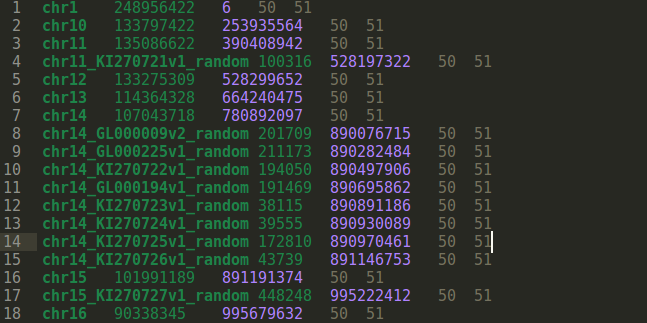This is really cool.
I think it looks pretty robust as it is. Though, would it work for files with >5 columns? Might need to do some figuring out on how to encode the 5th column if there is a 6th column. Maybe something along the lines of '(?<=\t[\S]\t)[\S]\t'?


I was working on the mostly trivial case of fasta-index format (faidx) and I think because it was so simple I found a very nice way to select columns by the order in which they appear. The only requirement right now is that it is in a tab-delimited file.
What it does is match the first column until the first tab, scopes it, then pushes to
contig.lengthIn
contig.lengthevery non-whitespace character is selected and scoped. Then when it hits the next tab it pops out.The third column is then selected, scoped and pushed to
genomic.offset. The fourth column is selected and then popped at the tab.etc... This push-pop back and forth with tabs can be repeated for N number of columns which means that .bed, .bedpe, .gtf, .sam, and possibly some of .vcf can now be 'solved' since we know what type of data is supposed to be in the Nth column.
Can anyone think of a reason that this won't work or will break at some edge-case?
If not, we'll need to re-work those syntaxes as I think this is a more robust approach then trying to select each column by the data range which could be there.
faidx.sublime-syntax